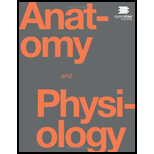
Visit this site (http://openstaxcollege.org/l/heartvalve) to observe an echocardiogram of actual heart valves opening and closing. Although much of the heart has been “removed” from this gif loop so the chordae tendineae are not visible, why is their presence more critical for the atrioventricular valves (tricuspid and mitral) than the semilunar (aortic and pulmonary) valves?
To analyze:
Why the presence of chordae tendineae is more critical for the atrioventricular valves than semilunar valves.
Introduction:
Chordae tendineae also called the heartstrings are closely associated with the papillary muscles of the atrioventricular valves. The semilunar valves, however, lack them.
Explanation of Solution
The atrioventricular valves are situated between the auricles and ventricles − the tricuspid valve between the right auricle and the right ventricle while the mitral or bicuspid valve between the left auricle and the left ventricle. They have papillary muscles attached to them. The chordae tendineae are string-like tendons which connect these valves to the papillary muscles.
During the pumping action of the heart, immense intraventricular pressure is created during systole or ventricular contraction. The atrioventricular valves shut their cusps to ensure no backflow of blood occurs from the ventricles to the auricles. The chordae tendineae play a vital role in holding the cusps of these valves in place and preventing the prolapsing of the mitral and tricuspid valves.
If we talk of the semilunar valves, their role to avoid back flow of blood is at the sites and situations where the pressure of the blood is lower compared to the atrioventricular valves. The pulmonary valve is present at the junction of the right ventricle and the pulmonary trunk. The aortic valve is present at the junction of the left ventricle and the aorta.
During the ventricular systole when the pressure in ventricles becomes greater than the pulmonary artery or the aorta these valves open an allow blood to flow though them. When the pressure in the ventricles decreases during diastole, these valves close on their own. Since their closure is directly associated with the lower pressure of blood they do not require strong tendons like chordae tendineae to keep them in position.
The mechanism and role of the closing of atrioventricular valves and the semilunar valves are directly related to the intraventricular pressure during the pumping action of the heart. During systole, when intra ventricular pressure is high the bicuspid and tricuspid valves close while the semilunar valves open. During diastole or low intraventricular pressure, the situation is reversed. Hence, the presence of chordae tendineae is more critical of atrioventricular valves than the semilunar valves.
Want to see more full solutions like this?
Chapter 19 Solutions
Anatomy & Physiology
Additional Science Textbook Solutions
College Physics
Biology: Life on Earth (11th Edition)
Concepts of Genetics (12th Edition)
Human Anatomy & Physiology (2nd Edition)
Essentials of Genetics (9th Edition) - Standalone book
Campbell Essential Biology with Physiology (6th Edition)
- Label the hearts main parts in the diagram below.arrow_forwardFigure 40.11 Which of the following statements about the heart is false? The mitral valve separates the left ventricle from the left atrium. Blood travels through the bicuspid valve to the left atrium. Both the aortic and the pulmonary valves are semilunar valves. The mitral valve is an atrioventricular valve.arrow_forward
 Anatomy & PhysiologyBiologyISBN:9781938168130Author:Kelly A. Young, James A. Wise, Peter DeSaix, Dean H. Kruse, Brandon Poe, Eddie Johnson, Jody E. Johnson, Oksana Korol, J. Gordon Betts, Mark WomblePublisher:OpenStax College
Anatomy & PhysiologyBiologyISBN:9781938168130Author:Kelly A. Young, James A. Wise, Peter DeSaix, Dean H. Kruse, Brandon Poe, Eddie Johnson, Jody E. Johnson, Oksana Korol, J. Gordon Betts, Mark WomblePublisher:OpenStax College Biology 2eBiologyISBN:9781947172517Author:Matthew Douglas, Jung Choi, Mary Ann ClarkPublisher:OpenStax
Biology 2eBiologyISBN:9781947172517Author:Matthew Douglas, Jung Choi, Mary Ann ClarkPublisher:OpenStax Human Physiology: From Cells to Systems (MindTap ...BiologyISBN:9781285866932Author:Lauralee SherwoodPublisher:Cengage Learning
Human Physiology: From Cells to Systems (MindTap ...BiologyISBN:9781285866932Author:Lauralee SherwoodPublisher:Cengage Learning Fundamentals of Sectional Anatomy: An Imaging App...BiologyISBN:9781133960867Author:Denise L. LazoPublisher:Cengage Learning
Fundamentals of Sectional Anatomy: An Imaging App...BiologyISBN:9781133960867Author:Denise L. LazoPublisher:Cengage Learning





